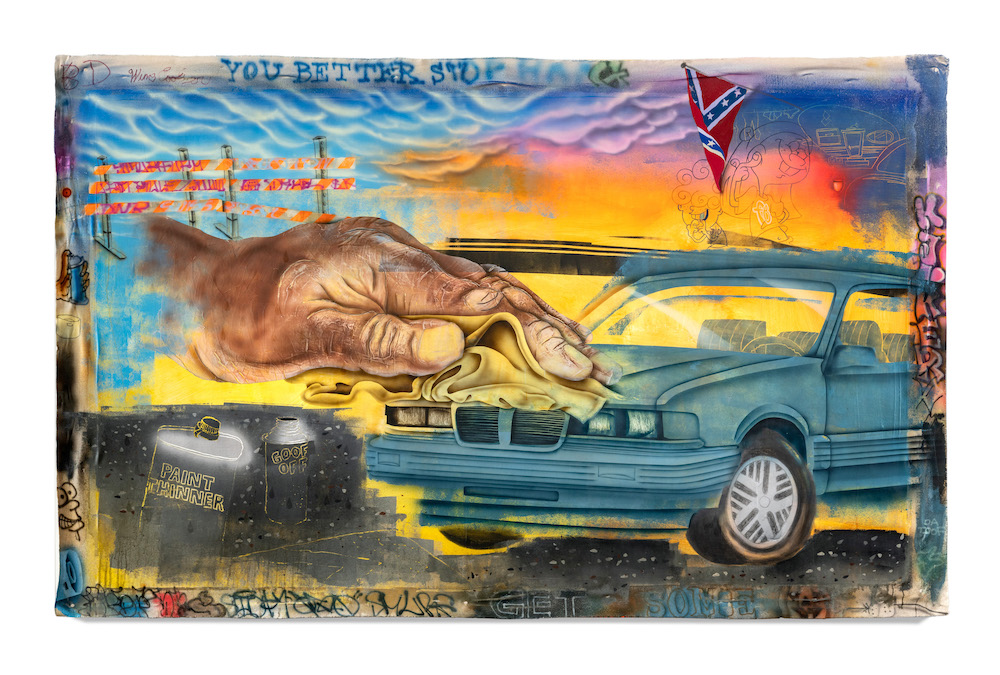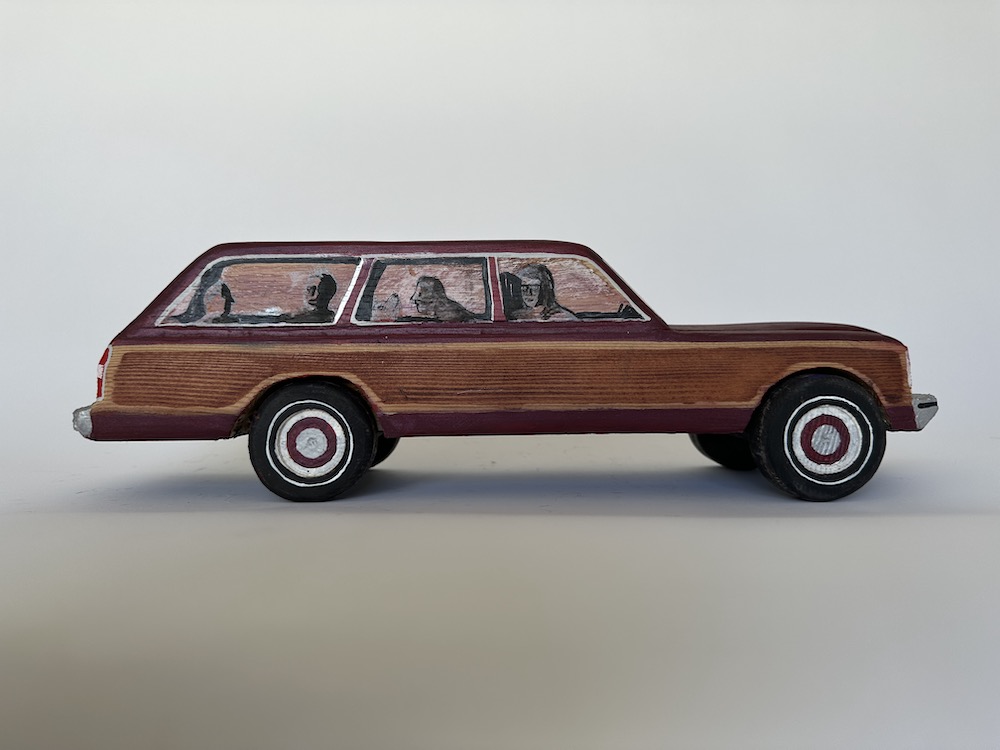Raised in and around Washington DC, with two degrees in painting, Matthew Rosenquist now makes sculptures, albeit with some paint applied. How did that happen? I ask him. After grad school in the South, he took an entry-level job at the Smithsonian with duties that drew him into the woodshop department: He was making simple tables and chairs and realized he liked working with wood—or more specifically, with his hands.
When Rosenquist moved to New York he still considered himself a painter and continued to show his art while working in cabinet shops. The eureka moment to become a sculptor occurred when he moved to Los Angeles in 2010. He sheepishly admits that while taking morning walks with his dog along the Arroyo he found himself dumpster-diving in the numerous trash receptacles. On one such walk he found a “disgusting, dirty Barbie doll” that he brought back to his studio. A 4 x 6-inch piece of wood was staring at him and he began carving into it, using the doll as a model. Now his repertoire of roughly carved wood sculptures includes vintage television sets, dogs, aerial pieces, figures holding smartphones (all shapes and sizes) and lots of cars and vans from the ’70s and ’80s. This November, Rosenquist will have a solo show of his wooden vans and TVs in Tokyo. He was excited to talk about a show he saw this past spring at M+B in West Hollywood.
Pat Phillips found my work on Instagram and was really into it; instantly we were simpatico. A lot of his references relate to his memories of growing up in the South in the ’90s and early 2000s, not so dissimilar to my upbringing. I love his depictions of cars, sneakers and especially how his cartoony drawings appear within his paintings; he draws very well. When I saw his exhibition “Strange Suburb,” there was one painting that stood out for me titled You Better Stop Hangin’ Out With Them White Bois. A giant hand with a rag is seemingly wiping down an old Pontiac Grand Am, the same model my aunt had growing up, of which I have fond memories, although it’s an awkward looking ’80s car, not real good-looking, but kinda cool as well. It’s a powerful painting where Phillips visually packs everything in with all of these symbolic smaller components (rebel flag, barricade points, graffiti, a can of paint thinner, Goof Off—a paint remover). Elsewhere in the show is a neon text wall piece: “POOR OLE NIGGA THINKS IT’S A CADDY”—a colloquial acronym for Pontiac. Where the hand might look like it’s polishing the car, actually there’s a much larger message. Phillips is addressing the racial and social inequalities of being Black and growing up in Louisiana. The large hand in the painting is trying to erase his tarnished childhood memories rife with the injustices of being Black in America.
—As told to Tulsa Kinney

Pat Phillips, You Better Stop Hangin’ Out With Them White Bois, 2023. Courtesy of the artist and M+B, Los Angeles.


